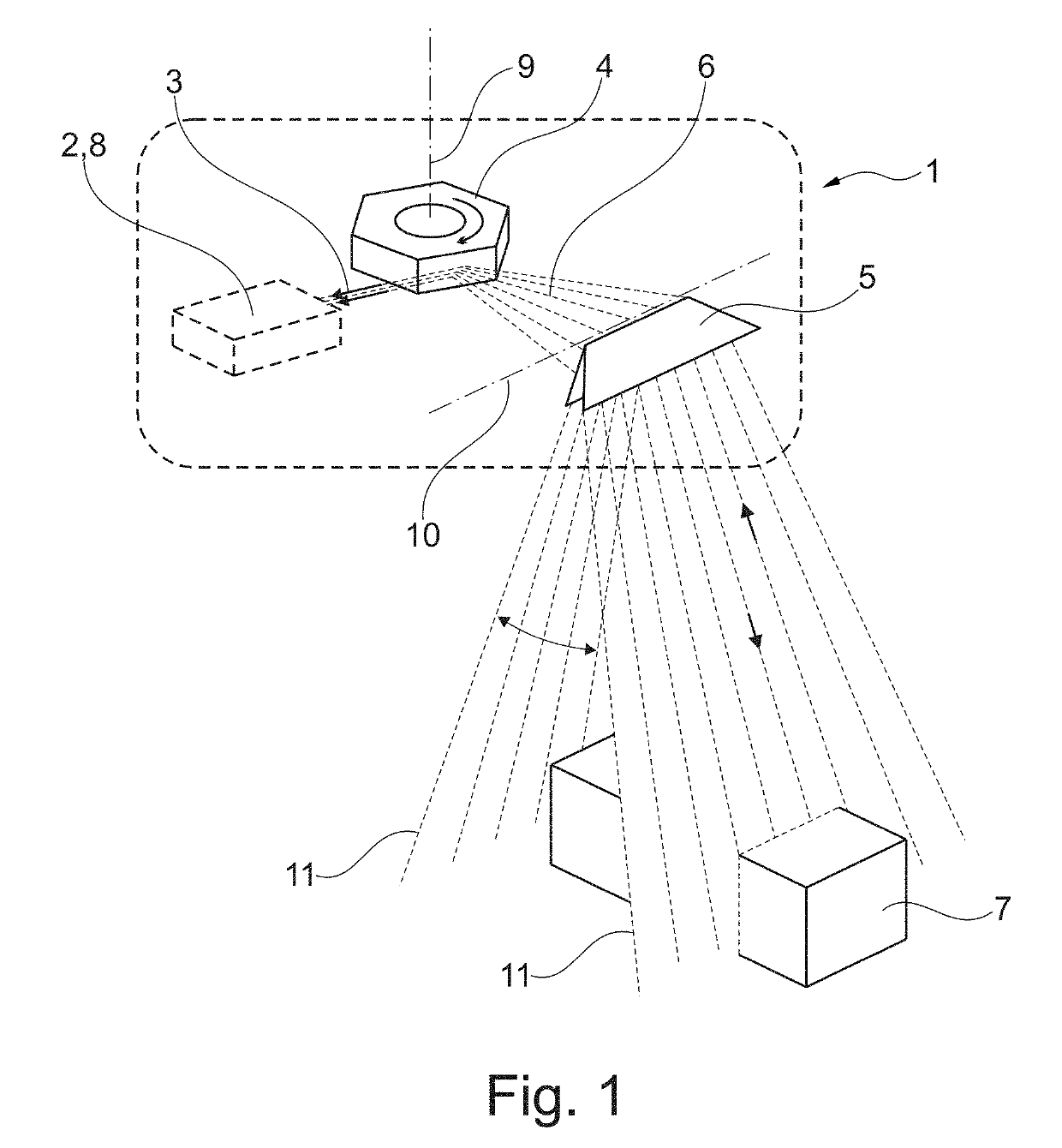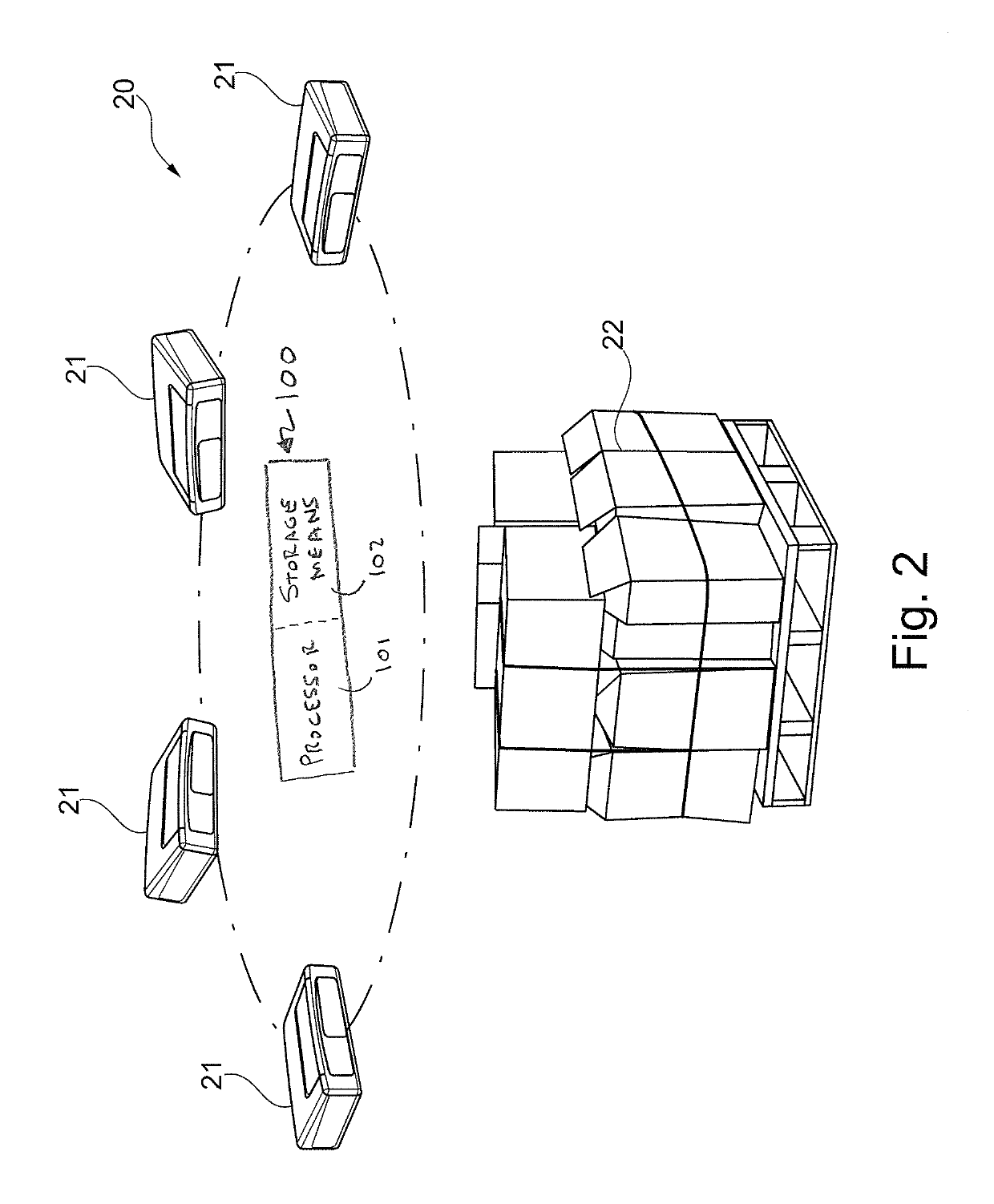Method of imaging an object for tracking and documentation in transportation and storage
a technology of object tracking and documentation, applied in the field of producing images, can solve the problems of object loss or damage in transport, overcharging or undercharging a customer, and not being suitable for the purpose of tracking objects in transport, so as to reduce the size of the image file, without the cost and complexity of additional hardware
- Summary
- Abstract
- Description
- Claims
- Application Information
AI Technical Summary
Benefits of technology
Problems solved by technology
Method used
Image
Examples
Embodiment Construction
[0045]FIG. 1 schematically illustrates a laser scanner 1 of a type that can be used to carry out the method of the present invention. Its principal components are an emitter 2 of a collimated beam 3 of modulated laser radiation, a dynamic beam deflector 4, 5 to move the collimated beam 3 in fan-shaped sweeps 6 over the object 7 (wherein the latter can be at rest or in motion), and a radiation sensor 8 (arranged here in a combined emitter / receiver unit 2, 8) to receive the radiation reflected from the object 7 and convert it into an electrical signal.
[0046]After leaving the emitter 2, the laser beam 3 meets the hexagonal mirror prism 4 which in the arrangement of FIG. 1 rotates about a vertical axis 9 and causes the laser beam 3 to perform continuous fan-like sweeps in a horizontal plane. A second deflector 5, here in the form of a planar mirror 5 swiveling about a horizontal axis 10 deflects the sweeping laser beam 3 into the area of the object 7. As a result of the swivel movement ...
PUM
 Login to View More
Login to View More Abstract
Description
Claims
Application Information
 Login to View More
Login to View More - R&D
- Intellectual Property
- Life Sciences
- Materials
- Tech Scout
- Unparalleled Data Quality
- Higher Quality Content
- 60% Fewer Hallucinations
Browse by: Latest US Patents, China's latest patents, Technical Efficacy Thesaurus, Application Domain, Technology Topic, Popular Technical Reports.
© 2025 PatSnap. All rights reserved.Legal|Privacy policy|Modern Slavery Act Transparency Statement|Sitemap|About US| Contact US: help@patsnap.com



